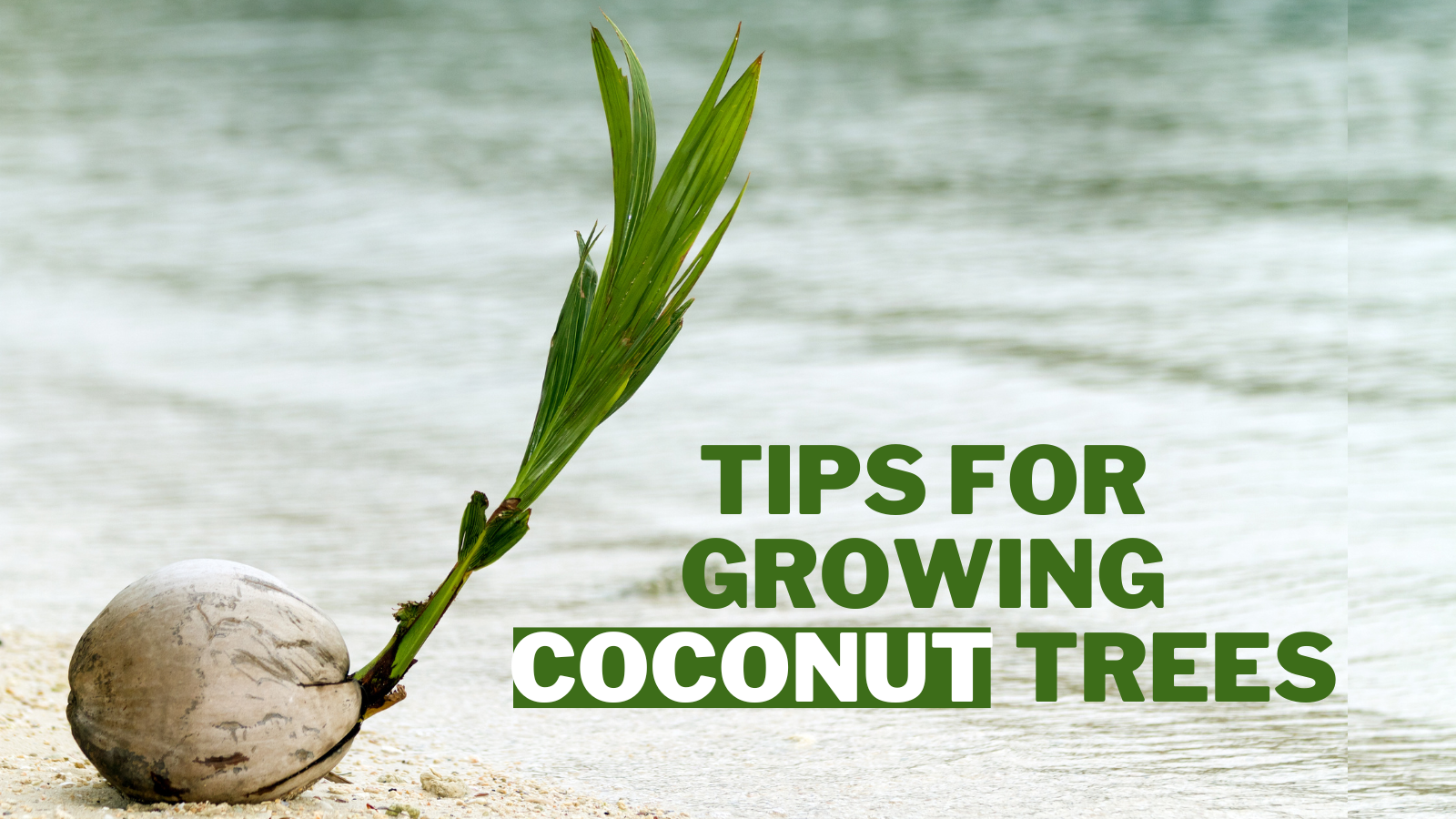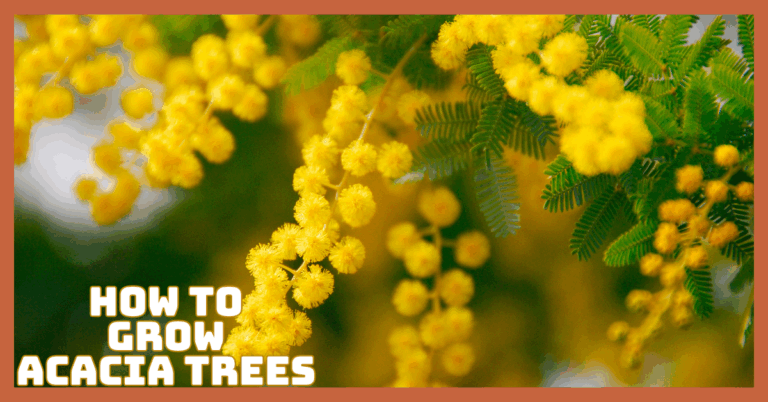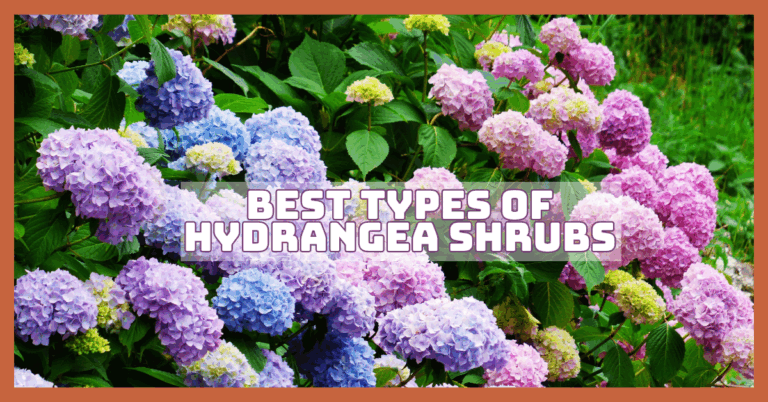5 Quick Tips For Growing Coconut Trees
5 Quick Tips For Growing Coconut Trees
Who doesn't enjoy cool, refreshing coconut water on a hot day? Coconut water includes electrolytes that our bodies require.
The white inner pulp of the coconut is also nutritious and will give you enough calories to survive.
True, if you become stuck on a secluded island, this husked fruit can be a lifeline. One interesting fact about coconut is that, despite its name, it is not a nut.
Growing a coconut tree from a store-bought coconut necessitates only a basic understanding of the fruit.
You must select the correct coconut from the store; sprouting takes time. The grown brown ones are ideal for planting.
A coconut tree can be grown from seed in a variety of methods. You can pick between a husked or a non-husked coconut. Both have various ways of preparing the coconut.
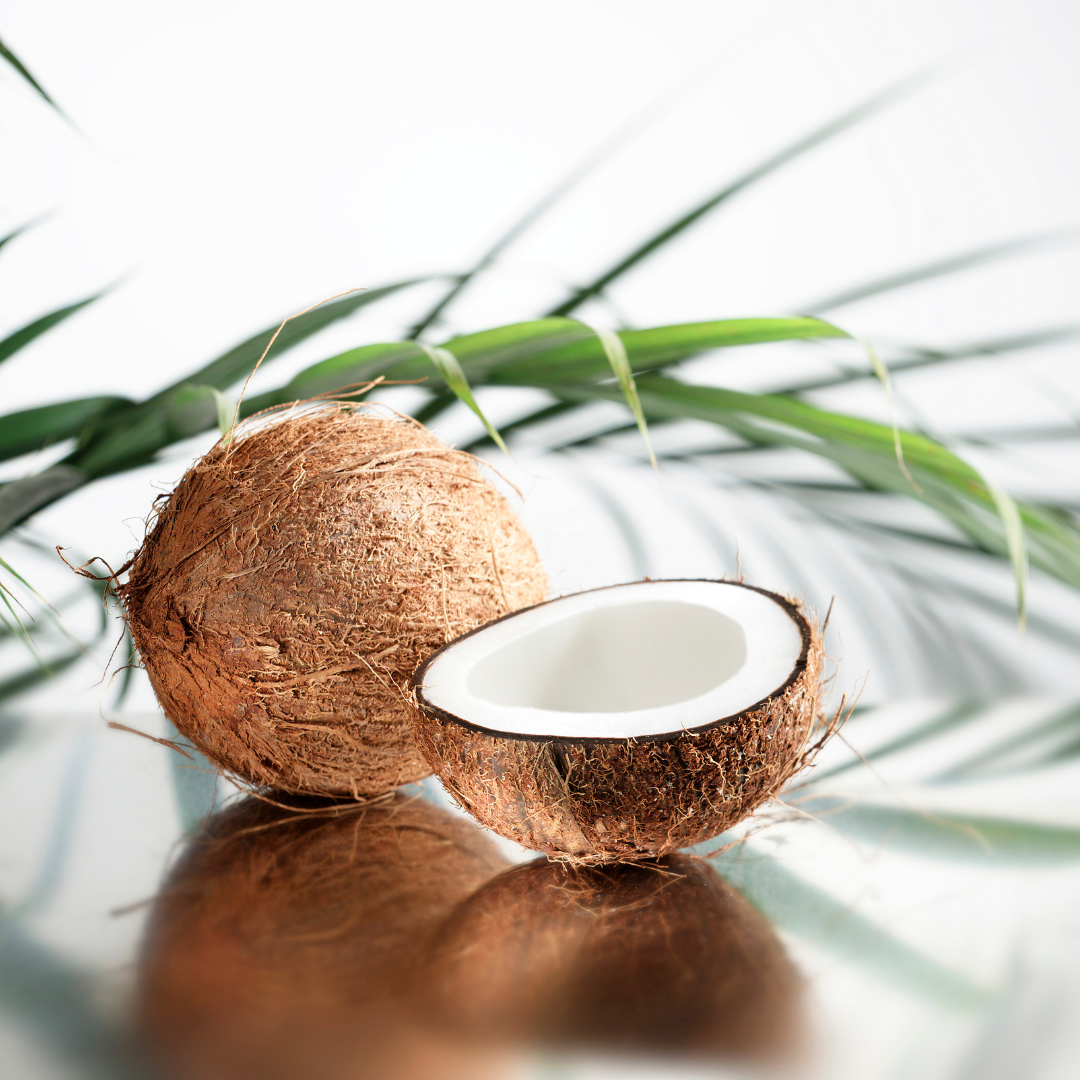
Uses Of Coconut
Coconuts are cultivated primarily for their oil. The endosperm is utilized to extract the oil, then used in cooking.
In the manufacturing of soaps, low-grade oils are employed. The endosperm can be eaten fresh or dried, and it's frequently grated for baking.
Water nuts, or young coconuts, are widely marketed in tropical resorts, with the juice sipped straight from the shell.
Coconut milk can also be made by squeezing the liquid from the grated endosperm of coconut. Coconut milk is a prominent ingredient in many Southeast Asian recipes.
Different Types Of Coconuts
Before growing coconut trees in your garden, you should find the best varieties for your location.
1. West Coast Tall Coconut
The West Coast Tall Coconut, or the Common Tall Variety, can grow in any soil type. They require about six to seven years to bear fruit and produce nearly eighty to ninety nuts or palms yearly. These coconuts also create a lot of water, which can make coconut juice later.
2. East Coast Tall Coconut
This coconut tree produces roughly 70 nuts yearly after a fruit-bearing period of six to eight years.
These trees thrive best on loamy soils and other well-drained soil; their coconuts contain approximately 64% oil.
Destructive pests such as bugs, mites, and insects are tolerated modestly by the East Coast Tall coconut tree.
3. King Coconut
Due to the Carotenoids component, also found in orange nuts, this type produces orange-skinned coconuts in clusters of 15-25. Vitamins, calcium, and amino acids abound. It has an orange husk.
4. Maypan Coconut
The verity originated in Jamaica. Another hybrid coconut developed in response to a lethal yellowing illness is the Maypan coconut.
The illness threatened to wipe out coconuts across the Caribbean, but the Maypan coconut proved resistant like the Fiji dwarf.
Malayan dwarf and Panama Tall coconuts have been combined to create this hybrid. It has the Malayan dwarf's hardiness and the Panama Tall's weather resilience.
5. Green Dwarf Coconut
Each year, these coconut trees produce 60 to 70 palms. Their dark green drupes are the most well-known feature of this plant, which bears fruit between three and four. The root wilt disease affects the green Dwarf coconut as well.
6. Orange Dwarf Coconut
This tree can grow to roughly 5 meters throughout its forty-year existence. It yields orangish coconuts, which take three to four years to mature fully. Coconuts from these trees are prized for their high meat content and pleasant water.
7. Malayan Yellow Dwarf Coconut
This palm produces 50-60 coconuts per year per palm and begins giving fruit after 3-4 years. It is an Indonesian native that is resistant to the deadly yellowing illness.
8. Macapuno Coconut
A genetic mutation in the 1930s resulted in the Macapuno coconut cultivar, which has nearly no water.
The meat is extremely soft, juicy, and sweet, making it ideal for desserts and pastries. Since the mutation occurred, people have been cultivating the Macapuno variety for its luscious coconuts. The type originated in the Philippines.
9. Tiptur Tall Coconut
The Tiptur tree's leathery fronds bear fruits 6-12 inches long. It bears fruit 6-7 years after planting and produces 70-80 coconuts yearly per palm. It's one of the easiest-to-grow coconut tree varieties!
10. Fiji Dwarf Coconut
Long fronds and a swelling trunk base distinguish this tropical ornamental tree. It stands out from the crowd thanks to its unusual leaf arrangement and big bulb at the bottom of the stem. The tough nut is the moniker given to it because of its toughness.
Steps Of Growing Coconut Trees
Germinating Coconut Seed
When you shake the ideal nut, a lot of water will be inside that splash about. Check to see if the nut is still in its husk. Use a coconut that has fallen to the ground or purchased from a store.
You will also need to re-pot your palm as it grows. Bringing it outside as frequently as possible is a good idea to get some direct sunshine in warm weather.
The palm doesn't need much pruning to keep its shape, but you can prune away any dead or diseased fronds as required.
- To keep the coconut immersed, use a stone or a weight. Allow 3-4 days for the nut to soak in the bucket.
- The coconut will soften, and the germination process will be accelerated due to this process.
- Seal the bag with the nut inside. For up to 3 months, keep the bag in a warm, dark place.
- A water heater is a fantastic example of a nice place to store the coconut.
- Wrap a damp paper towel around the roots and insert the seed back into the bag once the nut has germinated and begun to grow roots.
- When the sprout is around the length of your finger, and the roots have grown to a length of 6 inches (15 cm) to 8 inches, the seed is fully formed (20 cm).
Planting The Tree
Make a half-and-half mix of potting soil and sand. To help aerate the soil, add some fine gravel or vermiculite. You don't need to use premixed dirt if you're going to plant your coconut outside.
- Locate a location outside with loose, well-draining soil.
- A specialist potting soil, such as Kokohum, can also be purchased.
- Place the pointed end of the nut into the earth.
- Ensure that about a third of the coconut sticks out of the ground.
- Use a pot at least 10 inches (25 cm) deep and has a diameter large enough to hold the seed if you're planting your tree indoors.
Watering And Sunlight
Water the tree at least twice a week, keeping the soil moist but not soggy. Make sure the tree receives plenty of light, but not at a consistent intensity. It is preferable to have some shade.
You can make a mini-greenhouse for outdoor plants. Place bamboo stakes around the tree in the ground. Wrap plastic wrap around the sticks and across the top of the container.
Remove the greenhouse when the tree reaches a height of 1 foot (0.30 m). Spray both sides of the leaves with water to keep indoor trees hydrated.
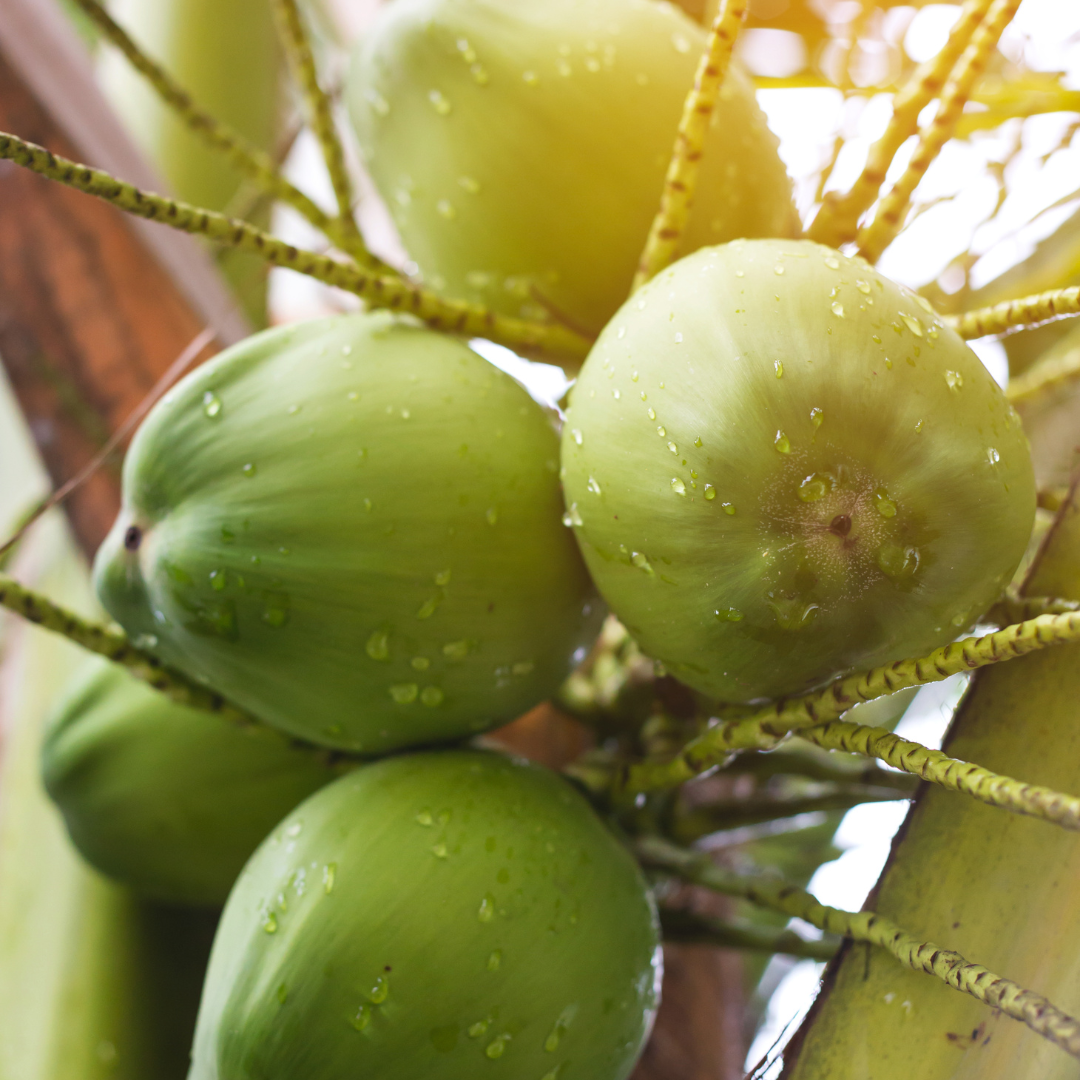
Take Care Of Your Tree
Coconut trees require a minimum temperature of 72° Fahrenheit (22° Celsius) but thrive at temperatures beyond 80° Fahrenheit (27° Celsius). It's critical to replicate the conditions in which the tree grows naturally.
Fertilizer
Coconut trees with enormous green leaves require additional nitrogen feeding to grow fully and be healthy.
Use a granular fertilizer with a 2-1-1 ratio to supply this macronutrient. It should have both slow and fast-acting nitrogen in it.
The tree will receive a short nitrogen boost from the quick-release nitrogen system, increasing plant growth. The slow-release method, on the other hand, provides nitrogen to growing roots over time.
Once the transplants have been established, treat the palm tree using a foliar fertilizer that contains either macro or micro-nutrients. Various nutrients come in little doses, yet they're all required for plant growth.
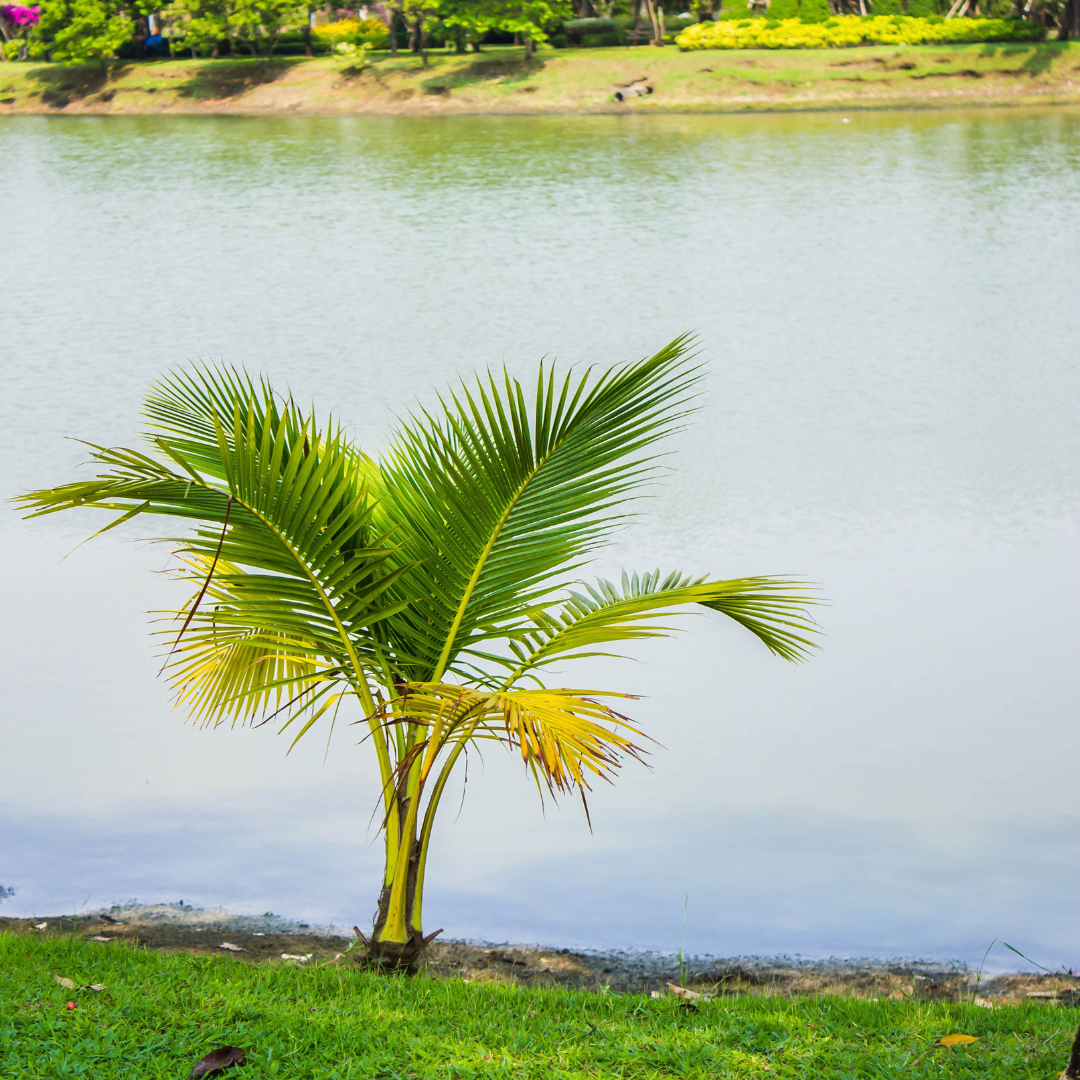
Is It Possible To Grow A Coconut Palm Indoors?
Consider growing a coconut palm (Cocos nucifera) indoors to transfer yourself to the beach, even if only in your head.
But a word of caution: this plant can be somewhat picky to maintain alive unless you live in its natural habitat.
The coconut palm, native to the Western Pacific islands, is probably what most people think of when they hear the word “palm tree.” These trees grow well in warm, humid climates all around the world.
When growing your palm inside, it's critical to provide it with as much light and warmth as possible, as well as plenty of humidity and moist but not soggy soil.
Coconut palms require fertilization regularly as well. Furthermore, you will need to re-pot your palm.
Pests & Diseases Of Coconut Trees
Mites
In coconut farms, nut-infesting mites have been discovered to inflict substantial damage to developing nuts. It is easily disseminated through fresh coconuts or husks to other places.
Under the perianth region of growing nuts, the pest colonizes and breeds. By sucking the sap from nuts, it causes significant damage.
The results are malformed and small-sized nuts, immature nut fall, and drying of the outer peel, with cracks emerging in regions.
Control techniques at the field level are difficult to implement since it is a micro pest that lives under the perianth.
The mite population may significantly reduce if the following coordinated plant protection measures were used.
Phytosanitary methods in coconut gardens, such as cleaning the palm crown and keeping measures, could significantly reduce the mite population.
Biopesticides are sprayed on the bunches. 2% neem oil-garlic oil emulsion (20 mL neem oil + 20 g garlic + 5 g bar soap in 1L water). The emulsion needs to be made on the same day as the application.
Implementing palm healthcare methods, like Vermicomposting or utilizing a lignin-degrading fungus to recycle biomass created inside the coconut system, is also possible.
Application of recommended fertilizer dosages in two split doses per the package of procedures in each state. By using the strategies outlined below, soil moisture can be conserved.
- Coconut husks are buried in the basin.
- Wherever possible, use coir pith as a mulch.
- Coconut leaves/green manure/green leaf manure mulching the basins (2M radius).
Red Palm Weevil
Pest invasions are most common in palms that are 3 to 15 years old. The presence of holes on the stem, seeping sticky brown fluid, and chewed-up fibres extruding through the hole.
The chewing sound made by the feeding grubs can be heard on occasion. Yellowing of the inner whorl of leaves occurs in the advanced stages of infection. When the palm dies, the crown falls or dries up.
Within the palm, the full life cycle is accomplished. Adults have a lifespan of 4 to 17 days. The egg stage lasts two to three days, the larval stage for 55 days, and the pupal stage for 12 days.
The mature weevil is reddish-brown in hue with a distinctive long curved snout. The full life cycle took 90-100 days to complete.
To kill the insect inside the trunk of a palm devastated by the red palm weevil, cut, divide, and burn it.
Clean up your garden by cutting and removing any palms that have already been harmed and any decaying stumps.
Injuries to the trunk should be avoided since the bug lays eggs in these wounds. Wounds should be plastered with a mixture of Carbaryl/Thiodan and soil, if there are any.
Keep at least 1 meter of petiole while trimming leaves. Use the pheromone trap to attract weevils and destroy the ones you catch.
If rhinoceros beetle assault is widespread, use fungicides as directed if leaf rot/bud rot is observed, as the weevil lays eggs in such palms.
Inject 0.1 percent Endosulfan (3 ml/L water) or 1 percent Carbaryl (20 gm/L water) into the palms that have been affected.
Coconut Caterpillar
The coconut caterpillar is a dangerous pest that causes extensive damage to the foliage of mature coconut palms. In most cases, outbreaks occur between February and April, when hot and dry weather.
The adult coconut caterpillar has an ashy grey body and a dark brown head, whereas the larva has a creamy body and a dark brown head.
The adult stage takes 5-7 days to mature, the egg stage takes 5 days to develop, the larval stage takes 45 days to grow, and the pupa stage takes 12 days to mature. The life cycle lasts around 8 weeks in total.
From January through May, there are a lot of attacks. The caterpillar feeds on the lower leaf surface's green matter while remaining within the silk and frass galleries. All green substances in the leaves will be eaten up in a severe attack.
Biological control, such as releasing parasitoids like Gorriozus nephantidis, Elasmus nephantidis, and Brachymeria nosatoi, is particularly efficient against this pest.
Bud Rot
The fungus Phytophthora palmivora causes bud rot, a deadly illness. The disease is hazardous to young palms (5-20 years) in dense under plantations. These occurrences are more likely during the rainy season when relative humidity levels are high.
The spindle leaf shows mild wilting and drooping in the early stages. The terminal bud and surrounding tissues root, resulting in a slimy mass that emits a terrible odour that attracts flies. The palm crown might get inflamed and eventually fall off. Control measures can be implemented.
Palms with slanting terminal buds should be cut and burned if affected. After removing infected dead tissues, use a borax combination or a fungicide containing 1% copper.
The crowns of healthy palms in the area of damaged palms should be treated with fungicidal bags placed in the axil of the young palm as a preventative measure.
Leaf Blight
The fungi Peastalozzia palmarum and Bipolaris incurvata are to blame. Yellow-brown dots develop on the lower fronds' leaflets at first, which grow in size and become grey over time.
These patches eventually coalesce into big brown blotches, giving the area a burnt appearance. Apply potash muriate or kitchen ash.
Improve water drainage in flooded areas. I am spraying with a 1% copper fungicide or a Bordeaux mixture in cases of severe infestation.
Stem Bleeding
Ceratocystis paradoxa is the fungus that causes it. It enters the tree through wounds or cracks in the bark.
A thick rust-coloured liquid initially flowed from longitudinal fractures in the stem's bark. The fibrous tissues beneath the lesion get dark and disintegrate.
Apply Bordeaux mixture or a 1% copper fungicide solution to the wound after removing the dead tissues with a chisel.
Bole And Root Rot
Ganoderma boninense is responsible for this. Rot is the enemy. Near the base, there is the first reddish-brown seeping.
Lower fronds in advanced stages show fading and drooping. Cut and burn affected plants using a fungicide like Calixin 70 percent.

Conclusion
Coconuts are a diverse food source regarded as a “Super Food” due to their multiple health advantages! If you’re planning to grow coconut trees in your home garden, I hope my tips will be helpful for you.
I trust you enjoyed this 5 Quick Tips For Growing Coconut Trees article. Please stay tuned for more blog posts to come shortly. Take care!
JeannetteZ
>>>Please click here to read my all-inclusive article about Container Gardening<<<
Are you interested in homegrown herbs and medicine? Please click here to find out more about it!
Your Opinion Is Important To Me
Thoughts? Ideas? Questions? I would love to hear from you. Please leave me your questions, experience, and remarks about this article on the 5 Quick Tips For Growing Coconut Trees in the comments section below. You can also reach me by email at Jeannette@Close-To-Nature.org.
Disclosure
This post may contain affiliate links. I earn from qualifying purchases as an Amazon Associate and other affiliate programs. Please read my full affiliate disclosure.
You might also enjoy these blog posts:
The 6 Best Things About Growing Pear Trees
Simple Guide To Growing Apricot Trees In Pots
Super Easy Ways Of Growing Lychee Trees In Pots
Easy Ways To Grow Mango Trees In Containers
11 Simple Ways To Use Avocado In Your Daily Meal

